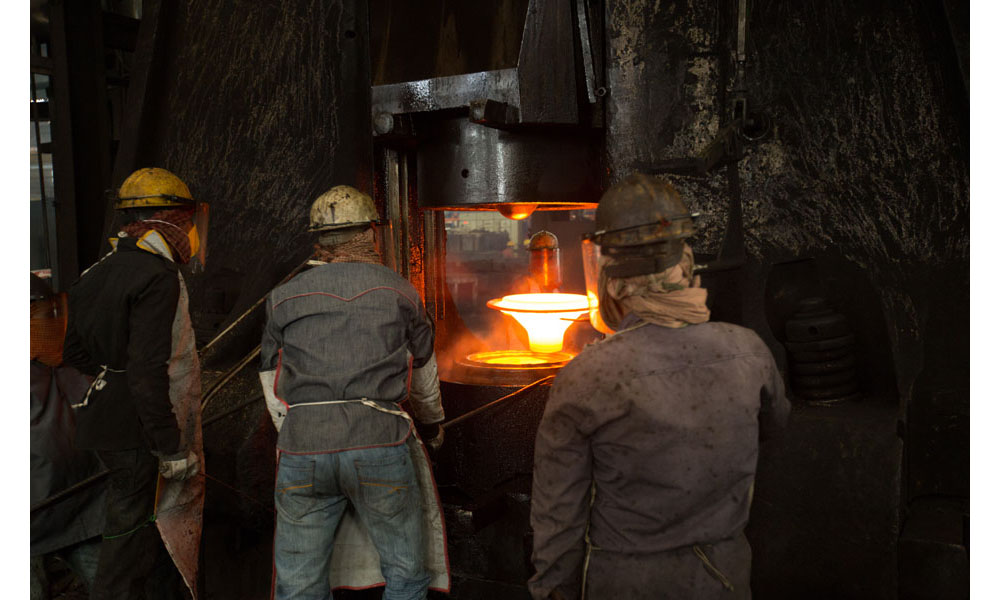AISI 1026 Carbon Steel (UNS G10260)
Carbon steels are steels that contain only carbon as their specific alloying element. Traces of 0.4% silicon and 1.2% manganese can be found in these steels. Carbon steels also contain small quantities of residual elements such as copper, nickel, molybdenum, aluminium and chromium.
AISI 1026 Carbon Steel (UNS G10260)
Introduction
Carbon steels are steels that contain only carbon as their specific alloying element. Traces of 0.4% silicon and 1.2% manganese can be found in these steels. Carbon steels also contain small quantities of residual elements such as copper, nickel, molybdenum, aluminium and chromium.
The following datasheet provides an overview of AISI 1026 carbon steel.
Chemical Composition
The chemical composition of AISI 1026 carbon steel is outlined in the following table.
| Element | Content (%) |
|---|---|
| Iron, Fe | 98.73-99.18 |
| Carbon, C | 0.220-0.280 |
| Manganese, Mn | 0.60-0.90 |
| Sulfur, S | ≤ 0.050 |
| Phosphorous, P | ≤ 0.040 |
Physical Properties
The following table shows the physical properties of AISI 1026 carbon steel.
| Properties | Metric | Imperial |
|---|---|---|
| Density | 7.858 g/ cm3 | 0.2839 lb/in³ |
Mechanical Properties
The mechanical properties of cold drawn AISI 1026 carbon steel are displayed in the following table.
| Properties | Metric | Imperial |
|---|---|---|
| Tensile strength | 490 MPa | 71100 psi |
| Yield strength | 415 MPa | 60200 psi |
| Bulk modulus (typical for steel) | 140 GPa | 20300 ksi |
| Shear modulus (typical for steel) | 80.0 GPa | 11600 ksi |
| Elastic modulus | 190-210 GPa | 27557-30458 ksi |
| Poisson's ratio | 0.27-0.30 | 0.27-0.30 |
| Elongation at break (In 50 mm) | 15.00% | 15.00% |
| Reduction of area | 40.00% | 40.00% |
| Hardness, Brinell | 143 | 143 |
| Hardness, Knoop (converted from Brinell hardness) | 163 | 163 |
| Hardness, Rockwell B (converted from Brinell hardness) | 78 | 78 |
| Hardness, Vickers (converted from Brinell hardness) | 149 | 149 |
| Machinability (based on AISI 1212 steel as 100 machinability. The machinability of Group I bar, rod, and wire products can be improved by cold drawing.) | 75 | 75 |
Thermal Properties
The thermal properties of AISI 1026 carbon steel are given in the following table.
| Properties | Metric | Imperial |
|---|---|---|
| Thermal expansion co-efficient (@0.000-100°C/32-212°F) | 12.1 µm/m°C | 6.72 µin/in°F |
| Thermal conductivity (0ºC) | 51.9 W/mK | 360 BTU in/hr.ft².°F |
Other Designations
Equivalent materials to AISI 1026 carbon steel are given in the following table.
| ASTM A29 | ASTM A510 | ASTM A512 | ASTM A513 | ASTM A519 |
| ASTM A545 | ASTM A576 | ASTM A830 | MIL F-20670 | MIL S-22698 |
| MIL S-24093 | SAE J1397 | SAE J403 | SAE J412 | SAE J414 |
| ASTM A273 |
APPLICATIONS
AISI 1026 Steel is used for forged motor shafts, hydraulic shafts and pump shafts, as well as for machinery parts.
FORGING
AISI 1026 Steel is forged from around 2250ºF down to a temperature in the region of 1650ºF (1230ºC down to 900ºC.). The actual forging and finishing temperatures will depend on a number of factors, including overall reduction during forging and complexity of part being forged.
HEAT TREATMENT
At this carbon level, annealing after forging may not be necessary, and depending upon the hardness after forging and the complexity of the part being forged, machining may be carried out on the as-forged parts. If parts are of complex shape and hence there are structural variations throughout the part, then normalizing is in order.
Normalizing may be carried out prior to case hardening, at 1650-1700ºF (900-925ºC,) or in the event of variations in microstructure resulting from forging of a complex shape.
Other heat treatment for these steels will involve carburizing or other surface hardening treatments, followed by hardening from a temperature in the region of 1400-1450ºF (760 -790ºC.) Large parts of simple shape will be water quenched, all others oil quenched.
TEMPERING
A tempering treatment at 340-410ºF (170-210ºC,) which more or less amounts to a stress relief, may be carried out following hardening. Any further tempering temperatures, to achieve required properties, will be based upon experience.
MACHINABILITY
Good machinability is obtained on AISI 1026 Steel in the as-forged or normalized conditions. The need for a normalizing treatment, as mentioned above, will be determined by a number of factors, including as-forged hardness and complexity of part.
WELDABILITY
Welding of AISI 1026 Steel may be carried out by all normal fusion methods, preferably using low-carbon electrodes.

